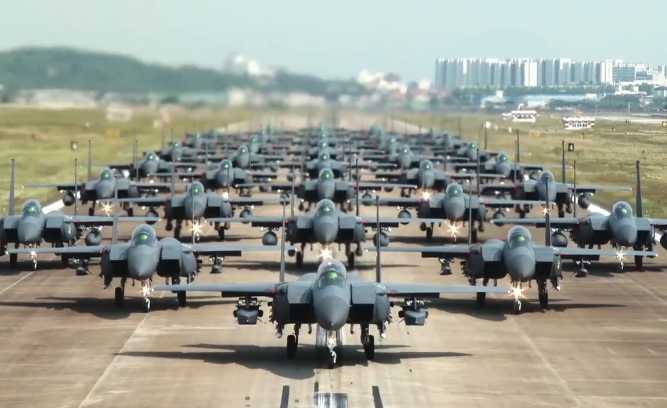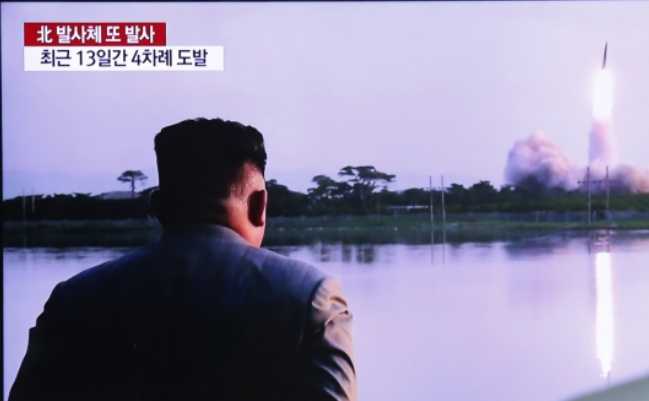
SEOUL, SOUTH KOREA — North Korea launched a ballistic missile Wednesday, Japan and South Korea reported, the latest in a series of tests that have upset the North’s neighbors and drawn firm condemnation from the United States.
South Korea’s military said North Korea fired the ballistic missile from the Sunan area near Pyongyang. That is the location of North Korea’s main international airport, from where several recent launches have originated.
The missile flew for about 470 kilometers, reaching a maximum altitude of about 780 kilometers, according to a statement from South Korea’s Joint Chiefs of Staff. Japan provided similar numbers.
Those figures suggest it was not a long-range launch. No further details were available. North Korea typically does not announce its launches until the following day in state media.
The test comes days before a new South Korean president takes office. Yoon Suk-yeol, a conservative former chief prosecutor, has vowed a tougher approach to Pyongyang.
In its statement, the South Korean military called the launch a “serious threat to the peace and stability of the international community, as well as the Korean Peninsula.”
Japanese Prime Minister Fumio Kishida said the launch “absolutely cannot be condoned,” according to Japan’s Kyodo news agency.
North Korea has ramped up missile tests this year, making significant progress on a weapons development wishlist laid out in 2021 by leader Kim Jong Un.
In March, North Korea launched its first intercontinental ballistic missile since 2017. It has warned it could soon launch a satellite into space. South Korean and U.S. officials warn the North could soon conduct its seventh nuclear test.
Although the United States and its allies have condemned the tests, China and Russia — two of North Korea’s biggest backers — have largely looked the other way. Instead, China and Russia have pressured the United States to do more to restart nuclear talks that have not been held since 2019.[content id=”79272″]
The United States has repeatedly said it is willing to re-enter negotiations without preconditions, but the North has either rejected or ignored those invitations.
Instead, North Korea has escalated its threats. Last week, Kim said North Korea should develop “overwhelming military muscle that no force in the world can provoke.” He also warned he could “preemptively” use his nuclear weapons to counter hostile forces, if necessary.
North Korea conducted a missile launch Wednesday, reported Japan and South Korea, the latest in a series of tests that have upset its neighbors and drawn firm condemnation from the United States.
The North fired a possible ballistic missile, according to Japan’s Coast Guard, which reported less than a half hour later that the missile had likely already fallen. Shorter flight times suggest a shorter-range launch.
In an alert to reporters, South Korea’s military said the “unidentified projectile” was launched toward the sea off North Korea’s east coast.
No other details were immediately available.
North Korea has ramped up missile tests this year, making significant progress on a weapons development wishlist laid out in 2021 by leader Kim Jong Un.
In March, North Korea launched its first intercontinental ballistic missile since 2017. It has warned it could soon launch a satellite into space. South Korean and U.S. officials warn the North could soon conduct its seventh nuclear test.
Although the United States and its allies have condemned the tests, China and Russia — two of North Korea’s biggest backers — have largely looked the other way. Instead, China and Russia have pressured the United States to do more to restart nuclear talks that have not been held since 2019.
The United States has repeatedly said it is willing to re-enter negotiations without preconditions, but the North has either rejected or ignored those invitations.
Instead, North Korea has escalated its threats. Last week, Kim said North Korea should develop “overwhelming military muscle that no force in the world can provoke.” He also warned he could “preemptively” use his nuclear weapons to counter hostile forces, if necessary.
[content id=”52927″][content id=”79272″]








